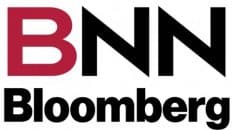Oh no, say it isn’t so! According to the scientifically challenged predictions by several subterranean rodents from Punxsutawney Phil and Staten Island Chuck to Wiarton Willy, it looks like we will have to endure another six weeks of winter.
Maybe, maybe not. My question is, when it comes to the winter season and distillates (heating oil, diesel, and jet fuel prices), what does it matter?
If you look at the latest U.S. inventory/demand data, we are in a lull and there is no immediate threat of a storm or a shadow. On the supply side, inventories of crude, gasolines, and distillates all increased. There may, or should be, some concern with the distillate numbers being down 17% versus the 5-year average but we have not heard a peep from the handwringers on Wall Street.
What I’m getting at is, when it comes to distillates, the winter is over. The high demand and price period is from November to mid-February.
So don’t worry, be happy!
Once we enter February, the demand for heating oil and diesel drops off the cliff, and attention turns to gasoline supply for the summer driving season. We see that happening already with demand for gasoline and jet fuel up significantly as consumers make their annual escape from winter. Meanwhile, in the latest U.S. government report, diesel demand shows zero increase.
So, let’s forget about winter but not forget about spring, right? Nope. I would worry and not be happy.
U.S. refineries are about to begin some very serious maintenance protocols that will drive down inventories because of shortened refinery supply. This will have a domino effect on pump prices in the U.S. and Canada. Then let’s not forget that at the beginning of next week, the sanctions on the import of Russian gasoline, diesel, and jet fuel takes effect. This will not only drive up the prices of these refined products, but it will also push up the price of the basic feedstock – crude oil.
Speaking of crude oil prices, they will have nowhere to go but up because the Strategic Petroleum Reserve (SPR) must be topped up to the tune of 180 million barrels. This means that those barrels won’t go into commercial inventories but will go into storage – owned and operated by the U.S. government.
Therefore, once the refilling begins, commercial inventories, as watched by traders, will fall, and prices will come out of hibernation and go in the opposite direction – and fast.
– Roger McKnight – B.Sc., Senior Petroleum Analyst








Add comment